New Gas Chromatography Products at Pittcon 2010
LCGC North America
John Hinshaw presents his annual review of all that was new in the field of gas chromatography at Pittcon 2010.
The 61st annual gathering of the Pittsburgh Conference on Analytical Chemistry and Applied Spectroscopy migrated south to Orlando, Florida, and met February 28–March 5, 2010. On Wednesday night, Universal Studios' rides and attractions were opened to busloads of conferees who, myself included, enjoyed rides and attractions that had not changed much at all since I last visited with family more than 10 years ago, save for some updated themes and new paint. Reminiscences aside, there was more than a casual similarity to the Pittsburgh Conference itself, about which similar statements could be made. Despite a slightly reduced exhibit area and an 11% decrease in total attendance, I found this year's conference operated at a high level of quality and efficiency. Nearly all the companies and key players I needed to meet with were there, and it was easier to find them. The technical program was very well organized, with more than 2348 presentations, seminars, short courses, and workshops, a slight increase over the 2009 program in Chicago. Even as the exhibitor portion of the conference has shrunk in each of the past few years, with 46 fewer companies in 2010, the technical program has remained at approximately the same size, and in my opinion, the quality of the presentations has improved steadily. On March 13–18, 2011, the Pittsburgh Conference will return to the Georgia World Congress Center in Atlanta, Georgia, for the first time since 1997.
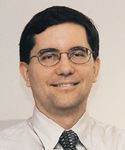
John V. Hinshaw
Since last year's Pittsburgh Conference, a number of major industry announcements have occurred. First was Agilent's (Santa Clara, California) announcement of the intent to acquire the businesses and products of Varian, Inc. (Palo Alto, California) As was made clear at the time and over the past year, a number of Varian products will not be acquired by Agilent, notably the gas chromatography (GC) division at Varian-Chrompack (Middleburg, The Netherlands) and the mass spectrometry (MS) business in Walnut Creek, California. Shortly after this year's Pittcon, Bruker (Billerica, Massachusetts) announced its intention to acquire these product segments. At the time of this publication both transactions have yet to complete. In addition to this, C2V (Enschede, The Netherlands), a manufacturer of micro gas chromatographs, was acquired by Thermo Fisher Scientific (Waltham, Massachusetts). These transactions are another sign of industry consolidation in the current economic climate. Yet, the GC instrument business appears to be going strong, with no fewer than eight new instrument product announcements at Pittcon 2010.

Companies Listed in This Column
This annual "GC Connections" installment reviews GC instrumentation and accessories shown at this year's Pittcon or introduced during the previous year at conferences such as ASMS or Analytica. For a review of new chromatography columns and accessories, please see Ron Majors' "Column Watch" column in the March and April 2010 issues of LCGC (1,2). The information presented here is based upon manufacturers' replies to questionnaires, as well as on additional information from manufacturers' press releases, websites and product literature, and not upon actual use or experience of the author. During the conference, I took time to walk around the convention aisles and see some of the new products firsthand as well as discover a number of items that weren't covered by the questionnaires. Every effort has been made to collect accurate information, but due to the preliminary nature of some of the material, LCGC cannot be responsible for errors or omissions. This article cannot be considered to be a complete record of all new GC products shown at this year's Pittcon because not all manufacturers chose to respond to the questionnaire, nor is all of the submitted information included here due to the limited available space and the editors' judgment as to its suitability.

Table I: New instrument systems
New Instruments
The number of new GC instruments increased this year in comparison to 2009, with multiple introductions from both Agilent and Thermo Fisher Scientific, plus a new instrument from Shimadzu (Columbia, Maryland) as well as some other interesting offerings. In particular, the Agilent GHG Greenhouse Gas analyzers represent a continuing interest in "green" analytical chemistry such as PerkinElmer's (Waltham, Massachusetts) EcoAnalytix platforms. In addition, Agilent showed the 5975T transportable Low Thermal Mass (LTM) capillary column GC–MS system that is aimed at chemical warfare analysis, first responders, and military and homeland security officials as well as food safety testing and environmental monitoring. The Agilent 1200 Series Analytical supercritical fluid chromatography (SFC) system also is included in this year's listing. Although not a gas chromatograph, the system's supercritical fluid mobile phase is gas-like in its physical characteristics, and arguably, it is equally at home in either GC or liquid chromatography (LC) circles.
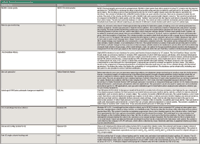
Table II: New instrument accessories
Thermo Fisher Scientific also brought two new GC systems to the conference. The TSQ Quantum XLS GC–MS-MS system is a high-performance triple-quadrupole system with a number of unique new features that make it stand out. The ISQ single-quadrupole GC–MS system lies on the other end of the GC–MS spectrum as a routine workhorse instrument with an excellent pedigree.
From Shimadzu, the GC-2010 Plus capillary gas chromatograph is a completely updated version of the company's 2010 series that includes new detectors, Advanced Flow Technology, backflushing and detector split options, and rapid oven cooling. In addition, Baseline-MOCON (Lyons, Colorado) brought in its new Series 9000 H heated hydrocarbon analyzer for applications that require samples to stay heated above its dew point, and Torion (American Fork, Utah) updated its GUARDION-7 GC-TMS portable GC–MS system with electronic pressure control (EPC) pneumatics and new external PC control software.

Table III: New sampling accessories
General Accessories
A number of useful and unique GC and SFC accessories appeared at Pittcon 2010. NLISIS Chromatography (Veldhoven, The Netherlands) enhanced its Meltfit tube sealing system with a column guide system that facilitates the installation and removal of columns from a GC oven with plug and play capability. AirGas (Radnor, Pennsylvania) introduced a series of remote gas monitors that track and alert on low gas supply pressures and levels, and SGD (Emerson, New Jersey) showed the new AutoLogic-II 918 Series changeover manifold that works with both cryogenic liquid and high-pressure gas cylinders. Alpha MOS (Hanover, Maryland) introduced the AroChemBase library database for aroma and chemical characterization\ by GC analysis; the software uses the Kovats Index as a reference method. Parker Domnick Hunter (Charlotte, North Carolina) displayed a new zero air generator range that utilizes core platinum catalyst technology to produce clean dry hydrocarbon-free air and can be stacked with the company's other laboratory gas generators.
From Modular SFC (Franklin, Massachusetts), the CFC-3 Centrifugal Fraction Collector is an enhanced version of the company's fraction collectors for SFC. The Fast GC Single Column Heating Unit from VICI (Houston, Texas) mounts a nickel-clad capillary GC column in the main GC oven and controls the temperature and high-speed ramps. Also in the column temperature control category, the Advanced Cooling System (ACS) column cooler from Wasson-ECE (Fort Collins, Colorado) takes the opposite approach of cooling the column as required, but without needing cryogenic coolant.
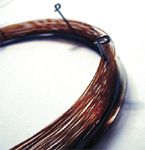
(GETTY IMAGES)
GC Detectors
The detector category came up a little short with only two entries, but both represent significant advances in their respective technologies. The FasTOF high-resolution time-of-flight mass spectrometer from Zoex (Houston, Texas) has very high performance specifications, with resolution greater than 5000 at the midpoint of its mass range and a maximum 500-Hz spectral acquisition rate that makes it well suited to the demands of comprehensive GC×GC. From PID Analyzers (Pembroke, Massachusetts), the model PI-51 photoionization detector can be added to any conventional GC system and features improved detection limits and dynamic range compared to previous detectors from the company.
GC Sampling and Accessories
Quite a few companies introduced sampling accessories this year. Gerstel (Linthicum, Maryland) featured a unique Selectable 1D/2D GC–MS system that controls whether a sample is subject to a single or dual dimensional separation on a standard GC–MS instrument equipped with the accessory. The model 7150 headspace preconcentrator from Entech (Simi Valley, California) is capable of recovering volatiles and semivolatiles up to C25 at sub-parts-per-billion levels before GC analysis. From Teledyne Tekmar (Mason, Ohio), the AQUATek 100 Waters-only Autosampler is a purge-and-trap autosampler that automatically generates sample blanks from a built in water reservoir. Markes International, Ltd. (New Haven, Connecticut) launched of a new version of its Micro-Chamber/Thermal Extractor (μ-CTE) for the measurement of (S)VOC (volatile and semivolatile organic compounds) such as formaldehyde, as well as the TD-100 thermal desorption system, which incorporates electrical cooling and sample recollection for repeat analysis, and couples to any make of GC or GC–MS system.
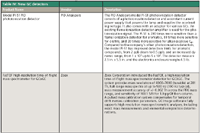
Table IV: New GC detectors
SGE Analytical Science (Austin, Texas) showed its eVol dispensing syringe system, a combination of one of the company's interchangeable XCHANGE enabled analytical syringes with a handheld programmable electronic dispenser for highly repeatable dosing of liquid volumes covering the range from 200 nL to 500 µL.
Conclusion
While Pittcon 2010 was the smallest Pittsburgh Conference in quite a few years, I will risk predicting that next year's conference in Atlanta will see a significant increase in attendance and exhibitor booths. I won't imply that moving up to Atlanta qualifies as a move to the "North" as I certainly don't want to insult any Peachtree aficionados, but it is true that previous conferences' relative attendance levels generally correlate with the number of degrees of north latitude. I look forward to finding more unique new GC and related products that demonstrate its ongoing viability and sustained innovative growth at Pittcon 2011.
Acknowledgment
I would like to thank the manufacturers and distributors who kindly furnished the requested information before, during, and after Pittcon 2010, allowing a timely report on new product introductions. For those manufacturers who did not receive a preconference questionnaire this year and would like to receive one and be considered for early inclusion into Pittcon 2011 coverage, please send the name of the primary company contact, the mailing address, fax number, and e-mail address to David Walsh, Editor-in-Chief, LCGC North America, c/o Advanstar Communications, 485 Rte. 1 South, Bldg. F, Iselin, New Jersey 08830, Attn.: Pittcon 2011 New GC Products, or e-mail to: david.walsh@advanstar.com.
John V. Hinshaw "GC Connections" editor John V. Hinshaw is senior Research Scientist at Serveron Corp., Hillsboro, Oregon, and a member of LCGC's editorial advisory board. Direct correspondence about this column to LCGC, Advanstar Communications, 485 Rt. 1 S, Bldg F, 1st Floor, Iselin, NJ 08830, or contact the author via e-mail: lcgcedit@lcgcmag.com.
References
(1) R. Majors, LCGC 28(3), 192 (2010).
(2) R. Majors, LCGC 28(4), 274 (2010).
(3) F.J. Schenck and J.E. Hobbs, Bull. Environ.Contam. Toxicol. 73(1), 24–30 (2004).
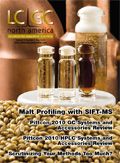
Troubleshooting Everywhere! An Assortment of Topics from Pittcon 2025
April 5th 2025In this installment of “LC Troubleshooting,” Dwight Stoll touches on highlights from Pittcon 2025 talks, as well as troubleshooting advice distilled from a lifetime of work in separation science by LCGC Award winner Christopher Pohl.












